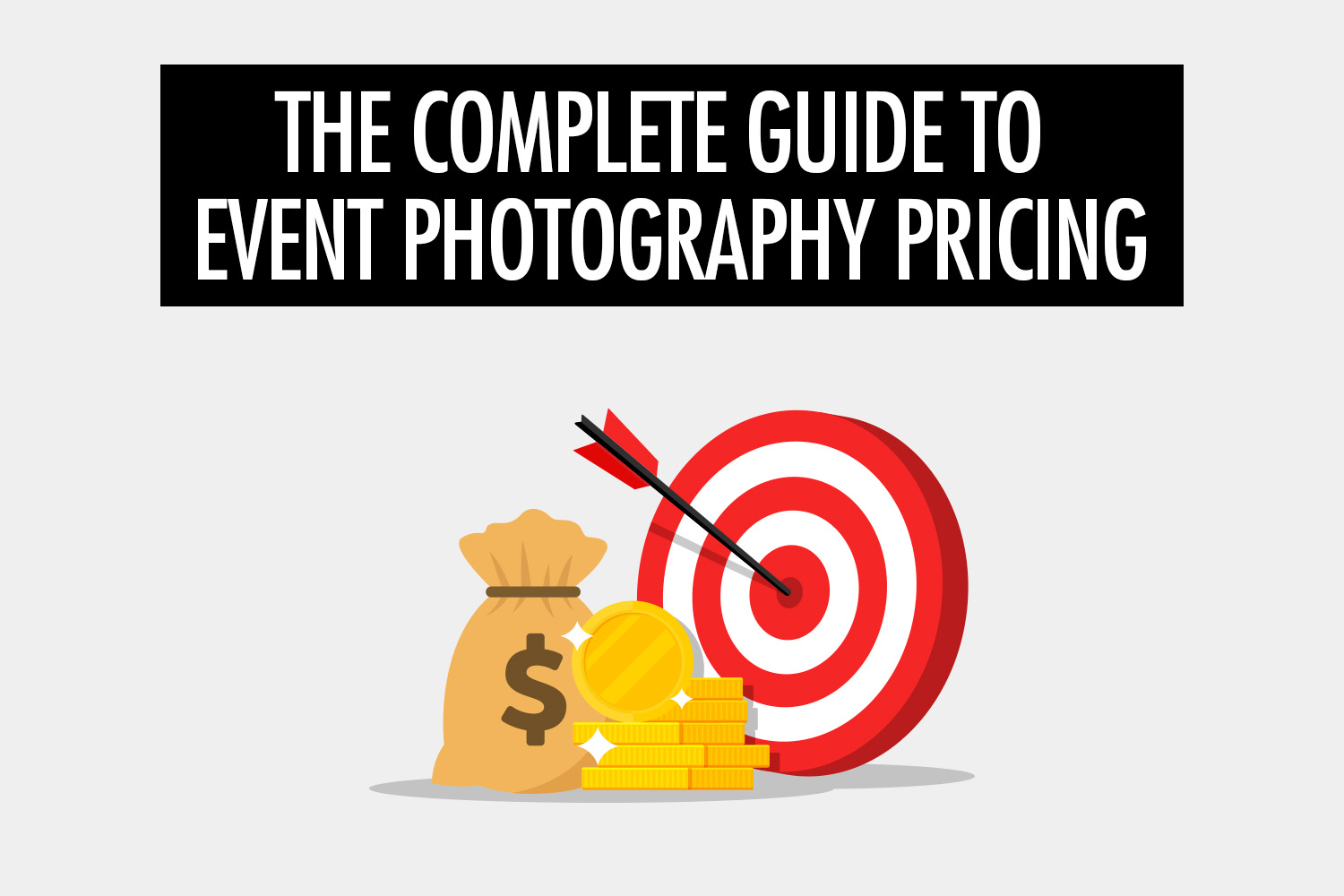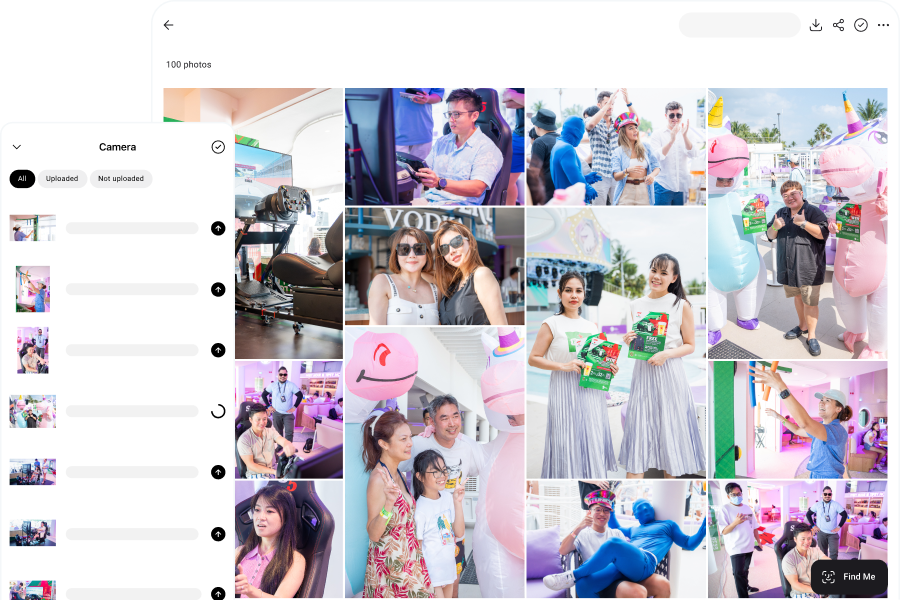When you’re starting your own event photography business, one of the earliest and hardest decisions is how to price your services.
This is a critical decision that will have knock-on effects on every aspect of your business, such as your positioning, profit margins and even the channels that you can use to get new clients.
In this article, we’ll first run through the general principles of event photography pricing. Then, we’ll talk about specific psychological pricing strategies.
We’re not going to prescribe a price range, because the rates will vary widely depending on your location.
For instance, we offer our event photography services in Singapore and Thailand, and the prices are wildly different due to the local context.
For the exact same service, we charge double the amount in Singapore just because the costs of operations are much higher, and the competitive landscape allows us to go with a higher event photography pricing while staying in line with the market.
Which brings us to the first point—you have to understand your own market by researching your competition.
Research Your Competition
All prices are relative. Because event photography is a local service, it means that your prices should be in line with what other photographers in your area are charging for.
You do not want to be charging much lower than your competitors, because it means that you’re leaving money on the table and undervaluing your service.
And while you can charge as much as you want, it depends on whether the market is willing to accept your pricing! Of course, if you’re a well-known event photographer with an established presence, that allows you to charge higher prices.
The key is to research your competition, to understand what high and low event photography pricing looks like for your area.
Understand Your Positioning
Now that you have done your research and you know what the price ranges are like in your area, you can decide on how you’re going to position yourself.
If you’re just starting out, without an extensive portfolio or years of event photography experience, you might want to price yourself at the low-end of the market.
This allows you to compete primarily on price, get your first clients and build your portfolio. Essentially, it’s a stepping stone for raising your prices in the future.
We don’t recommend staying at the low-end as a long-term strategy. Based on our experience and the experience of many other event photographers, price-sensitive clients are some of the hardest to work with.
Not to mention that you’ll need the volume to make up for the low prices, which means that you’ll be working extra hard.
It also limits the potential channels for getting new clients. For example, you might want to try running online ads, but your prices are too low to justify the ad spend.
Over time, you might want to move your event photography prices up to the mid-range—which is where we like to operate. This allows you to compete on value while staying competitive to all but the most price-sensitive clients.
After all, prices are also a signal of quality. Many clients do not want to work with the lowest priced options, which are perceived to be low in quality.
For our own event photography business, we like to offer outsized value for our mid-range prices. As an example, we offer a much quicker turnaround time of 3 working days for the edited photos, while charging the same as our competitors.
The last option is to price yourself at the high-end of the market. Essentially, you’ll sacrifice volume for larger deal sizes.
For this strategy, a large determinant of success is branding—to increase the perceived value of your services. For example, you could have won multiple photography awards at this point, or have a large following which converts into clients.
Most likely, your main source of clients will come from referrals, from one high-value client to another. For this segment of the market, clients will expect a high level of personalized service.
Simplify Your Event Photography Pricing
We strongly believe in simplifying our event photography pricing as much as possible, to make it easy for clients to understand. That’s why we charge the same regardless of the type of event or location of the shoot (as long as it’s within our coverage area).
Some event photographers have multiple variables which factor into the final price. While that’s fine, you also have to be aware that not all clients will have the patience to walk through all the different variables of your pricing.
In our experience, many event planners are in a constant hurry, and they want simple event photography pricing to make a quick decision.
It makes it easier for them to become your repeat clients too, because they know that they will not be surprised by any differential pricing.
Value-Added Services
Value-added services are a great way for you to upsell your clients—increasing the size of your deals and putting more money into your pocket.
When thinking about the value-added services to offer, think about the problems that your clients are trying to solve.
Do they need a quick turnaround for the edited photos, because they need to publish the photos in a press release, company announcement or social media post? Charge for that.
Do they need to print the photos or run a live slideshow? Charge for that.
Do they need to distribute the photos to the guests right away, with live sharing—because they want their guests to post those photos on their socials? You guessed it—charge for that.
One great tactic is to look out for the value-added services that your competitors are already offering. That’s because it’s a signal that those services are in demand.
Another great tactic is to work with Honcho, which makes it much easier to provide those value-added services, such as live sharing, slideshows and wireless printing. We’ve been doing it for our own events, and it helps to eliminate 90% of the manual tasks.
Psychological Pricing
By now, you should have a pretty good idea of how to price your event photography services. Next, let’s talk about psychological pricing and what your prices really say to your clients.
Pricing has a large impact on your client’s perception of your business and there are several factors that you’d want to pay attention to.
Prices That End in 9
This is probably the most well-known example of psychological pricing, where ending your price with a 9 makes it feel cheaper—think $999 instead of $1000.
That’s because of left-digit bias, where the leftmost digit of a number disproportionately influences decision-making.
This strategy is especially effective if you’re positioning yourself as the low-cost option, but it can also work for mid-range prices.
However, do not use this if you’re pricing yourself at the high-end, because it creates a dissonance. High prices signal quality and luxury, while prices that end with a 9 signal cost savings and a good deal. They don’t go together.
Prices That End in 0
On the other end of the spectrum, prices that end with 0 signal simplicity and premium quality.
This strategy is often used by luxury fashion and lifestyle brands, and helps to reinforce their premium status.
Clients who are looking for the best, and are willing to pay for it, are more likely to respond positively to prices that end with 0.
Hence, if you’re positioning yourself at the middle to high range, this is the appropriate strategy for you.
Price Appearance

The way that a price appears can influence the way your clients feel about it.
Removing the cents from your price will make people feel like they’re spending less money. Hence, $50 feels cheaper than $50.00, just because the number isn’t as long.
On top of that, removing the dollar sign entirely can make the price feel less painful—dollar signs trigger clients into feeling the pain of paying.
Keep these in mind when you’re designing your website or event photography pricing page.
Flat Rate Bias
Consumers prefer flat rates over pay-per-use options, even when they cost more. That’s because flat rates feel more stable and predictable.
Hence, design event photography packages which include your value-added services, rather than offer the value-added services a la carte.
It’s also an opportunity for you to offer packages at different tiers, by including or leaving out certain value-added services.
This goes back to our point of simplifying your event photography pricing. Flat rates allow clients to make easier decisions—instead of figuring out which a la carte options to go for, they just need to decide between 2-3 packages.
Examples
It’s time to bring it all together with some concrete examples, so let’s look at how we price our own event photography packages.
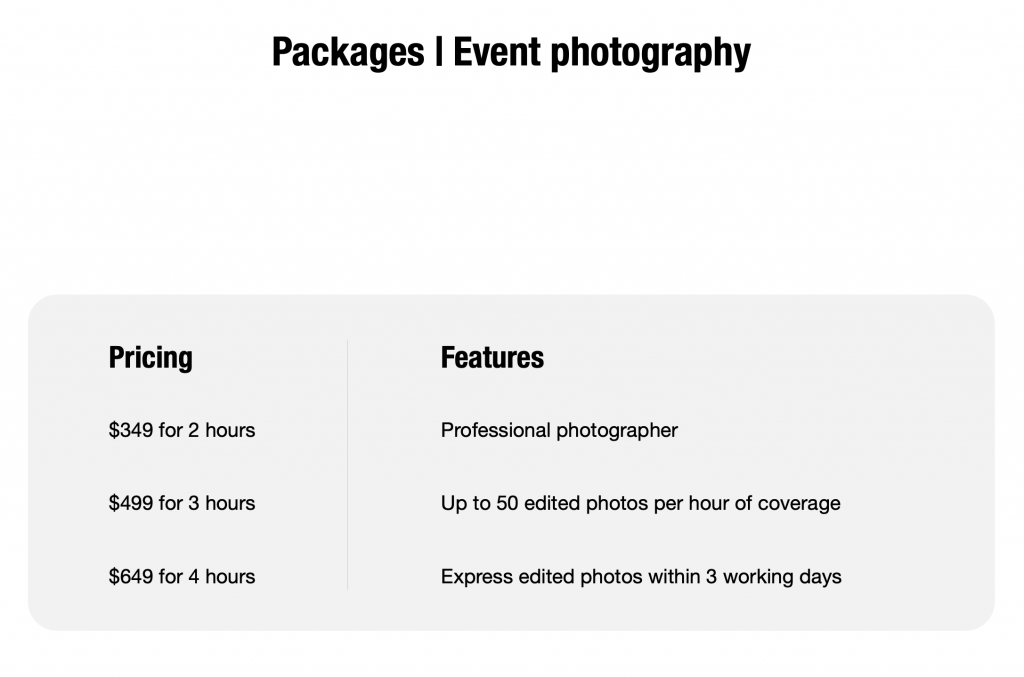
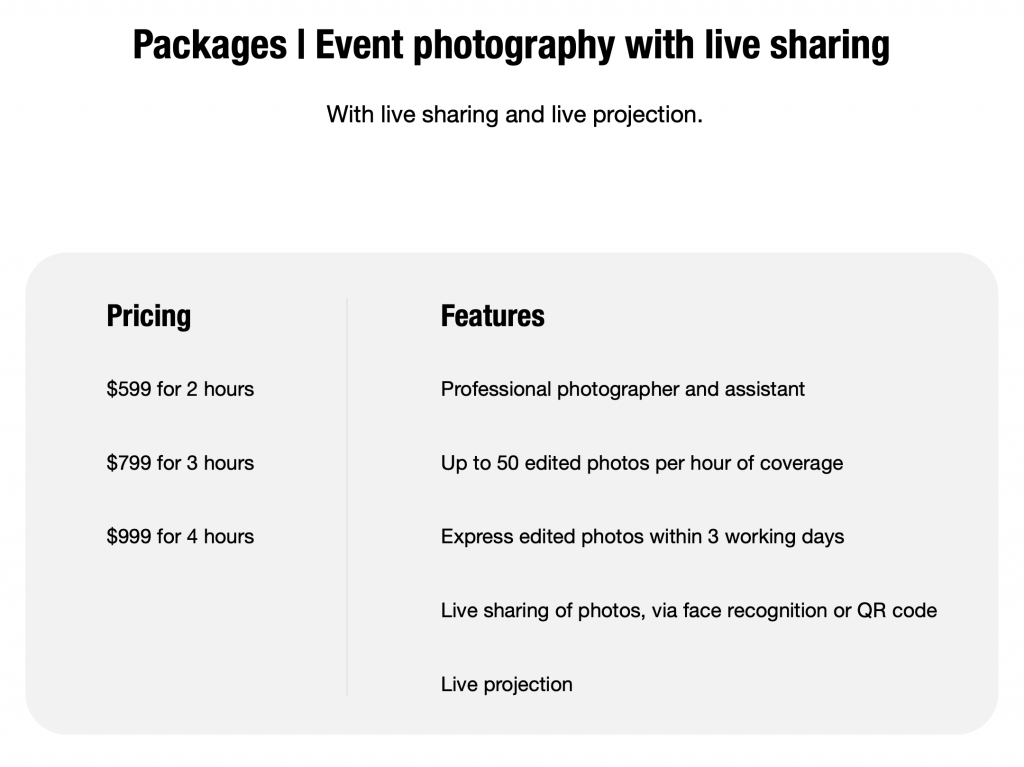
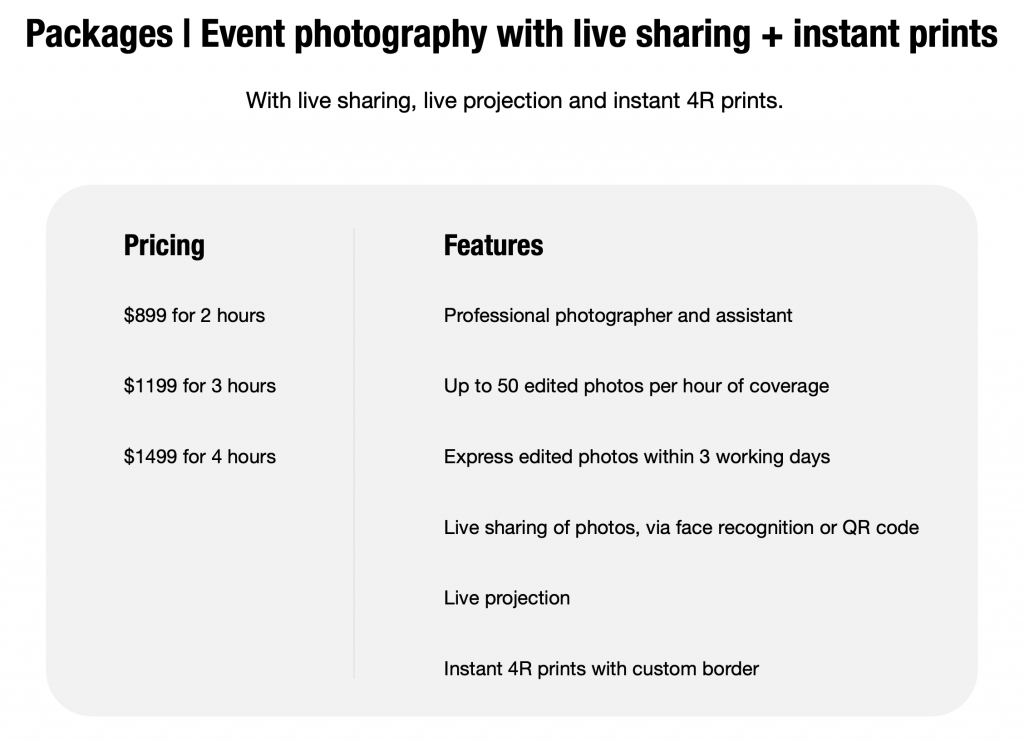
You’ll notice that we offer 3 packages, with different value-added services. Again, this allows us to upsell our clients while offering flat rates that clients prefer.
It also allows us to cover a fairly wide range of prices—so we have something to offer for clients who are working with tight budgets or have more spending power.
We end our prices in 9 because we want to appear cost competitive—many of the clients in our price range are still price sensitive, and want value for their money.
Conclusion
One of the most common complaints that we hear is the constant downward pressure on event photography prices. This usually comes from new photographers who are trying to find a footing in the market, and offering low prices to compete.
That’s why it’s important to understand your own positioning. If you’re not in the low-end of the market, the customers in that segment were never yours to begin with.
It’s important to constantly climb up the ladder of value—that is, offering more and more value to your clients over time. One great way to do that is through value-added services, which complement your core business.
It’s equally important to be clear about your own event photography pricing strategy, and to communicate that clearly to your clients. There’s nothing more frustrating than confusing prices.
Hopefully, this article will guide you if you’re just starting out. If you’re already in business, it’s useful to re-evaluate your pricing regularly, every 6 to 12 months, with these strategies in mind.

